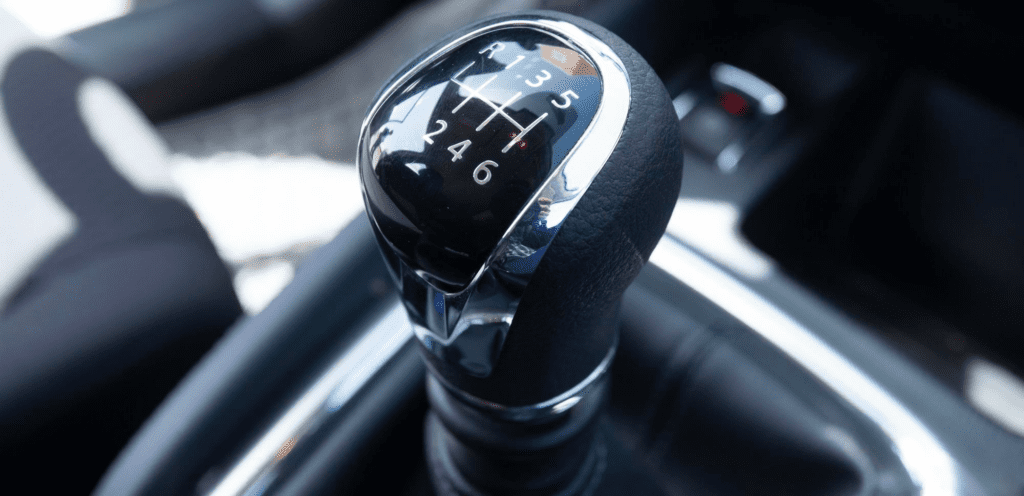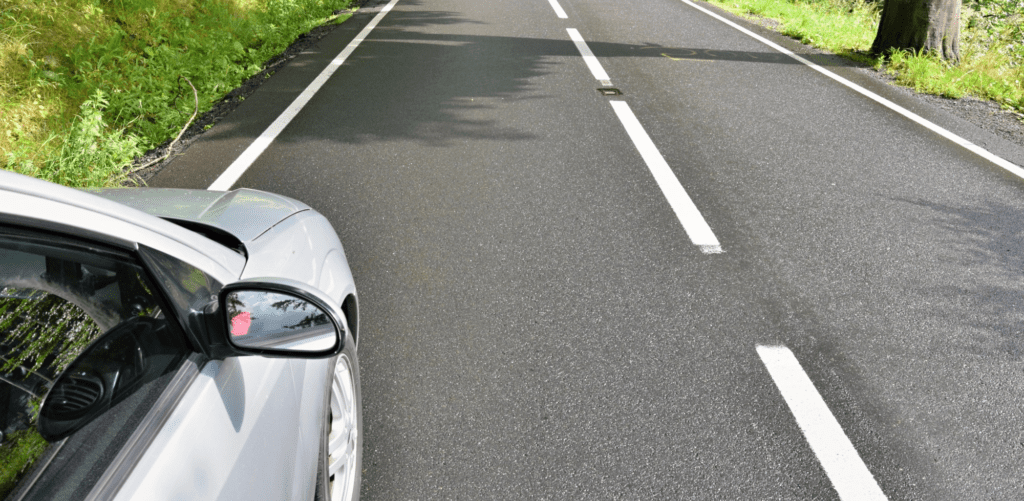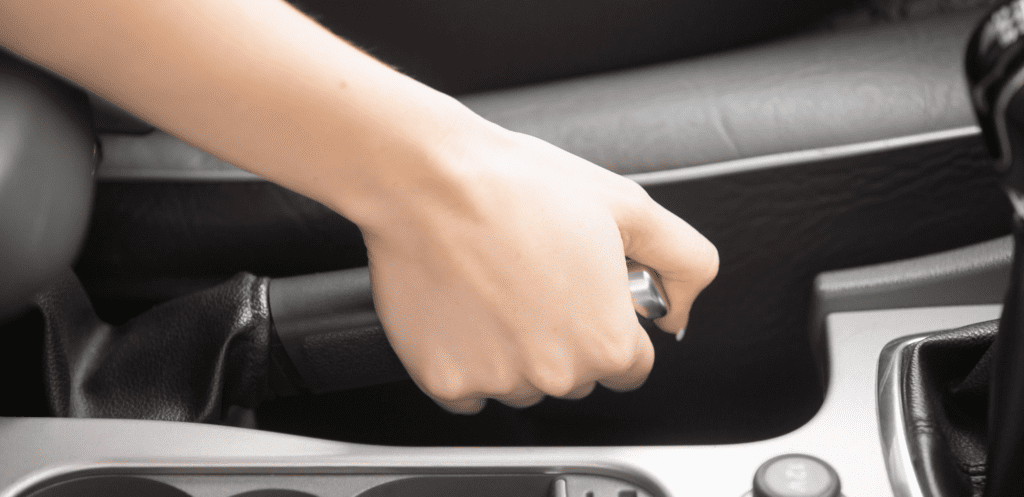
Picture this: You park your car on a slope, only to return later and find it has rolled down the hill, causing potential damage and putting others at risk. While activating your handbrake is a vital step to prevent such mishaps, it’s wise to have an additional safeguard in place.

Enter the practice of leaving your car in gear when parked—a simple yet effective failsafe. By engaging a gear, you add an extra layer of security, ensuring that even if your parking brake fails, your car remains stationary.
- Should I leave my car in gear all the time?
- How many drivers leave their car in gear when parked?
- Frequently asked questions
However, despite its importance, not every driver adopts this technique. Let’s delve into why it is imperative to make it a habit to leave your car in gear when parking, particularly in certain situations.
-
Slopes and inclines: When parking on a slope or incline, the force of gravity can cause a stationary vehicle to roll. Leaving your car in gear—commonly first gear or reverse—helps counteract this force, providing added resistance to prevent unintended movement.
-
Parking brake limitations: While the parking brake is designed to secure your vehicle, it may occasionally experience mechanical issues or fail to hold the weight of the car on steep slopes. By engaging a gear, you create an additional line of defence, reducing the risk of unintended rolling.
-
Extra peace of mind: Incorporating the practice of leaving your car in gear when parked offers reassurance, knowing that you have taken extra precautions to safeguard against potential accidents. It adds a sense of responsibility and attentiveness to your parking routine.
Remember, leaving your car in gear when parked is a simple yet essential safety measure. It’s a small action that can make a significant difference, ensuring the well-being of your vehicle, the safety of others, and the avoidance of unnecessary risks.
So, before stepping away from your parked car, take a moment to engage a gear, especially on slopes or inclines. By doing so, you contribute to a safer driving culture and set an example for responsible parking practices.
Should I leave my car in gear all the time?
Leaving your car in gear when parked on a hill is undoubtedly a smart move, but what about on more level terrain? Is it still necessary to exercise caution, or are there any potential drawbacks to consider?
While it’s true that a road doesn’t have to be particularly steep for rolling to pose a problem, such as with a slight incline in a driveway, there are instances where leaving your car in neutral on a perfectly flat surface is generally acceptable.
Mark Lewis of the Institute of Advanced Motorists, as cited by Which?, explains that “there is little need to leave a manual vehicle in gear when parked and unattended if the parking brake is working effectively.”

However, developing the habit of leaving your car in gear whenever you park can prove advantageous. It ensures that you remain mindful of this precautionary measure, especially when it truly matters. The act of leaving your car in gear becomes second nature, reducing the risk of forgetting to engage it when necessary.
Moreover, there are minimal downsides to adopting this habit. It reinforces a responsible approach to parking and adds an extra layer of security. By consistently leaving your car in gear, you foster a mindset of attentiveness and proactive vehicle management.
Remember, it is crucial to verify that your car is in neutral every time you start the engine. This should already be part of your regular cockpit checks before driving, becoming a natural part of your routine.
By exercising vigilance and incorporating this practice into your parking habits, you can contribute to a safer driving culture. Whether on a hill or a relatively flat surface, the simple act of leaving your car in gear when parked demonstrates your commitment to responsible vehicle ownership.
How many drivers leave their car in gear when parked?
You would expect leaving a car in gear when parked, especially on hills, to be a common practice considering the guidance provided in the Highway Code. However, survey data from Which? reveals that not everyone adheres to this simple yet crucial safety technique.

According to the survey, a notable 25% of drivers admitted to never leaving their car in gear when parked, even when on a hill. On the other hand, a larger proportion (35%) stated that they always left their car in gear, regardless of the surface.
Our advice remains that leaving your car in gear is an easy and effective way to prevent accidents when parked. Consequently, it’s advisable to apply this technique in a variety of scenarios.
While it may be tempting to leave your car in neutral if you are confident in the reliability of your parking brake and only anticipate parking on level ground, it’s always better to err on the side of caution. Accidents can occur unexpectedly, and using the additional security of leaving your car in gear can help mitigate potential risks.
Remember, safety should always be a top priority. By making it a habit to leave your car in gear when parked, you establish a proactive approach to vehicle safety, regardless of the terrain. Adopting this simple yet significant measure promotes responsible driving habits and demonstrates your commitment to prioritising safety on the road.
Frequently asked questions
If you find yourself driving an automatic car, the approach to securing your vehicle when parked differs slightly. Unlike manual cars with a range of gears, automatic cars typically have a straightforward “drive” mode. In this case, putting the car into gear isn’t applicable.
Instead, the Highway Code advises engaging the “park” mode when parking an automatic car. This mode effectively locks the transmission, ensuring that the vehicle remains stationary until you’re ready to drive again. It’s a simple and effective method of securing your automatic car when parked.
So, if you’re driving an automatic car, remember to shift into “park” mode when you’ve found a suitable spot to park. By following this guidance, you contribute to safer parking practices and ensure that your vehicle remains securely immobilised until you’re ready to continue your journey.
When parking on a hill, it’s essential to choose the appropriate gear to prevent your car from rolling. The direction your car is facing on the hill will determine the gear selection. Here’s what you should consider:
-
Facing downhill: If the front of your car is pointing downhill, engaging the reverse gear will help prevent it from rolling forward. By putting your car into reverse, you add an extra layer of security, ensuring it remains stationary.
-
Facing uphill: On the other hand, if you’re facing uphill, selecting a forward gear will assist in preventing your car from rolling backwards. While the Highway Code does not provide specific guidance on the choice of gear, opting for first gear is generally a reliable choice.
By following these guidelines, you can effectively minimise the risk of your car rolling when parked on a hill. Always exercise caution and ensure that your selected gear provides sufficient resistance to keep your vehicle securely in place.
With your parking brake applied and your car left in gear, your vehicle should remain stationary. However, in the unlikely event that your vehicle starts to roll, it’s crucial to minimise any potential damage and prevent it from rolling into the road.
That’s where a simple yet effective technique comes into play—turning your steering wheel when parking on a hill.
Here’s what you need to do:
-
Facing uphill: When parking facing uphill, turn your steering wheel away from the kerb. By doing so, if your car were to roll backwards, the wheels would hit the kerb and (hopefully) come to a stop.
-
Facing downhill: Conversely, when parking facing downhill, turn your steering wheel towards the kerb. This ensures that, in the event of rolling forward, the wheels would once again encounter the kerb, aiding in preventing further movement.
By incorporating this practice, you take an extra precautionary step to protect your car and mitigate any potential risks. Turning your steering wheel correctly when parking on a hill demonstrates a proactive approach to safety, reducing the likelihood of accidents or hazards.
Remember, even if you have confidence in your parking brake and gear selection, unexpected circumstances can arise. By correctly positioning your steering wheel, you add an additional layer of security, helping to keep your parked vehicle firmly in place.
In situations where there is no kerb present on the road where you’re parking, it’s important to adjust your steering wheel accordingly. The general guideline is to always turn your steering wheel away from the road to prevent your vehicle from rolling into traffic.
In the UK, where the majority of drivers park on the left-hand side, this means turning your wheel sharply to the left when parking on a hill without a kerb. This ensures that if your vehicle were to roll, it would veer away from the road, reducing the risk of it entering traffic.
Conversely, if you find yourself parking on the right-hand side of the road, sharply turn your steering wheel to the right. This action directs your vehicle away from the road, providing an added layer of safety to prevent unintended movement into oncoming traffic.
It’s crucial to note that this practice applies regardless of whether you’re parking uphill or downhill. By adjusting your steering wheel in the appropriate direction, you demonstrate attentiveness and responsible parking habits, even in scenarios where a kerb is absent.
Always remember to engage your parking brake and, where applicable, select an appropriate gear to further secure your parked vehicle. By combining these precautions with the proper steering wheel adjustment, you help minimise potential risks and contribute to safer parking practices.
A question that often arises among drivers is whether leaving their car in gear when parked poses any potential drawbacks. One common concern is the fear that if their parked car is struck by another vehicle, the gear engaged could be damaged. However, the likelihood of actual harm occurring to your car in such a scenario remains unclear.
While it’s understandable to have reservations, it’s important to consider a few key factors:
-
Gear durability: Modern vehicles are designed to withstand the forces exerted when the car is in gear. The gears themselves are engineered to handle the pressures and impacts that may occur, even in the event of a collision. However, it’s worth noting that extreme and exceptional circumstances could potentially lead to gear-related issues.
-
Insurance coverage: In the unfortunate event that your parked car is involved in a collision, it’s essential to have appropriate insurance coverage. Your insurance policy should provide coverage for damages, including any potential gear-related issues that may arise. Reviewing your insurance policy and discussing specific concerns with your insurance provider can offer peace of mind.
-
Individual circumstances: Factors such as the severity of the impact, the specific mechanical characteristics of your vehicle, and other variables can influence the outcome in the event of a collision. Each situation is unique, and the resulting effects on the gear system can vary.
Ultimately, while concerns about potential damage to the gear when leaving your car in gear when parked are valid, the likelihood of significant harm occurring is uncertain. It’s always wise to prioritise proper insurance coverage and consult with professionals to address any specific concerns related to your vehicle.
Remember, engaging your parking brake and selecting an appropriate gear are crucial safety measures when parking your vehicle. By following recommended practices and staying informed, you can make informed decisions and ensure the well-being of your car while parked.


